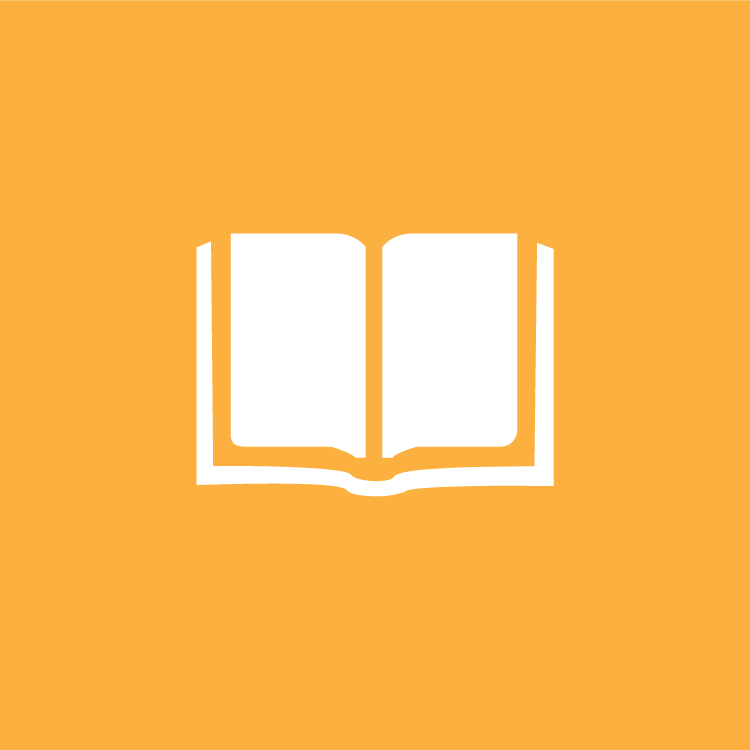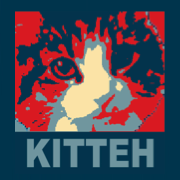181
181
-
-
by
Myers, A. J. William (Alexander John William), b. 1877
texts
eye 181
favorite 0
comment 0
Includes bibliographies
Topic: Religious education -- Teaching methods
21
21
-
-
by
Weitzman, Ronald A.
texts
eye 21
favorite 0
comment 0
Title from cover
Topic: TEACHING METHODS.,COURSES(EDUCATION)
352
352
1913
1913
by
Wells, Amos R. (Amos Russel), 1862-1933
texts
eye 352
favorite 0
comment 0
Topic: Religious education -- Teaching methods
This reference guide is designed to help seventh grade teachers plan for instruction, providing all of the goals and objectives in one document. The guide can be used to link instructional objectives across disciplines, plan integrated units, and assist in assessing student progress over time. Only the very basic components of each discipline included in the Standard Course of Study are incorporated in this publication. Goals and objectives are presented for: language arts; mathematics;...
Topics: ERIC Archive, Teaching Methods
LB_1028.35_ đ82_1999
Topics: Teaching methods, Education
932
932
-
-
by
Atkins, Alma Newell, Mrs
texts
eye 932
favorite 0
comment 0
Microfilm
Topic: Religious education -- Teaching methods
Title from cover
Topics: TEACHING METHODS., COURSES(EDUCATION)
412
412
texts
eye 412
favorite 0
comment 0
Microfilm
Topic: Religious education -- Teaching methods
Held by Gallaudet University Library Deaf Collections and Archives, Washington, D.C. (catalog link: http://catalog.wrlc.org/cgi-bin/Pwebrecon.cgi?BBID=3008230)
Topics: Teaching methods, Teaching methods, Oral method, Sign language
333
333
-
-
by
Eggleston, Margaret (White), Mrs., 1878-
texts
eye 333
favorite 0
comment 0
Bibliography: p. 175-181
Topics: Religious education -- Teaching methods, Storytelling
Held by Gallaudet University Library Deaf Collections and Archives, Washington, D.C. (catalog link: http://catalog.wrlc.org/cgi-bin/Pwebrecon.cgi?BBID=3008615)
Topics: Oralism, Teaching methods, Educational methods
Topic: Geometry -- Study and teaching Methods
Held by Gallaudet University Library Deaf Collections and Archives, Washington, D.C. (catalog link: http://catalog.wrlc.org/cgi-bin/Pwebrecon.cgi?BBID=3005223)
Topics: Teaching methods, Oral method, Manual communication
159
159
1930
1930
by
Carrier, Blanche, 1895-
texts
eye 159
favorite 0
comment 0
Microfilm
Topics: Religious education -- Teaching methods, Sunday schools
75
75
-
-
by
Dobrina Zheleva-Martins
texts
eye 75
favorite 0
comment 0
In the article, the author shares her experience of teaching the disciplines Form Formation and Theory of Composition to students of Engineering Design in the Forestry University in Sofia. The goals of the two disciplines are set out, namely: the aim of the discipline of Form Formation is to teach students the objective laws of the organization of the form and form formation in the world, knowledge attained thus far by the natural sciences. The aim of the discipline Theory of Composition is to...
Topics: Composition Theory, Form Formation, Teaching Methods
248
248
-
-
by
Burritt, Eldon Grant, 1868-1927
texts
eye 248
favorite 0
comment 0
Microfilm
Topics: Teaching, Religious education -- Teaching methods, Sunday schools
Held by Gallaudet University Library Deaf Collections and Archives, Washington, D.C. (catalog link: http://catalog.wrlc.org/cgi-bin/Pwebrecon.cgi?BBID=3007536)
Topics: Oralism vs. manualism debate, Teaching methods, Education
Held by Gallaudet University Library Deaf Collections and Archives, Washington, D.C. (catalog link: http://catalog.wrlc.org/cgi-bin/Pwebrecon.cgi?BBID=1422982)
Topics: Residential schools, Authors, Teaching methods, Schools
Held by Gallaudet University Library Deaf Collections and Archives, Washington, D.C. (catalog link: http://catalog.wrlc.org/cgi-bin/Pwebrecon.cgi?BBID=3008234)
Topics: Sign language, Teaching methods, Educational methods
Held by Gallaudet University Library Deaf Collections and Archives, Washington, D.C. (catalog link: http://catalog.wrlc.org/cgi-bin/Pwebrecon.cgi?BBID=3006029)
Topics: Teaching methods, Speech, Lipreading, Oral method
303
303
1904
1904
by
Brown, Marianna C. (Marianna Catherine), d. 1916
texts
eye 303
favorite 0
comment 0
The spiritual thought.--How to plan a lesson.--Lesson planning illustrated.--Notes from child-study
Topics: Religious education -- Teaching methods, Sunday schools
This essay is the first of a series of occasional papers written by members of the Humanistic Education Project. The purpose is to examine the possibility that philosophy might in fact provide a foundation for educational practice; that philosophy would provide practical knowledge concerning what ought to be done so students and teachers could deal intelligently with social reality in an effort to bring about change without the use of force. After some initial definitions of politics and...
Topics: ERIC Archive, Teaching Methods, Values, Ubbelohde, Robert
Topics: Religious education -- Teaching methods, Sunday schools
259
259
1907
1907
by
Roads, Charles, b. 1855
texts
eye 259
favorite 0
comment 0
"Helpful books for further study": p. 107
Topics: Religious education -- Teaching methods, Sunday schools
133
133
texts
eye 133
favorite 1
comment 0
King Faisal University - private teaching methods - Shaher
Topic: King Faisal University - private teaching methods - Shaher
Held by Gallaudet University Library Deaf Collections and Archives, Washington, D.C. (catalog link: http://catalog.wrlc.org/cgi-bin/Pwebrecon.cgi?BBID=3008622)
Topics: Sign language, Teaching methods, Language instruction
Gallaudet University-Deaf Rare Materials
305
305
1815
1815
by
Massieu, Jean Baptiste,1772-1846; Clerc, Laurent,1785-1869; Sicard, Roch Ambroise Cucurron,1742-1822; Sievrac, Jean Henrique; Ladébat, Andrés Daniel Laffon de,1746-1829
texts
eye 305
favorite 0
comment 0
Held by Gallaudet University Library Deaf Collections and Archives, Washington, D.C. (catalog link: http://catalog.wrlc.org/cgi-bin/Pwebrecon.cgi?BBID=1423666)
Topics: Speeches, addresses, etc, Teaching methods, Educational methods
Held by Gallaudet University Library Deaf Collections and Archives, Washington, D.C. (catalog link: http://catalog.wrlc.org/cgi-bin/Pwebrecon.cgi?BBID=1429980)
Topics: Teaching methods, Manual communication, Oral method
The author suggests that "today's educational movement is toward humanism, relevance, and individualization." The rationale for these remarks is discussed in sections on first language acquisition models, unstructured learning, trial and error learning, meaning in communication, language models, learning grammar, "perfect" pronunciation, the need to individualize, and the psychologist's and sociologist's viewpoint. The importance of social interaction through peer teaching...
Topics: ERIC Archive, Social Relations, Teaching Methods, Herbert, Charles H., Jr.
This paper reports on the versatility of teaching models from several vantage points. First, teaching models are applicable to a variety of educators with varying curriculum concerns. Experience has shown that all educators can use some aspect of teaching models in their work with learners. Second, teaching models are relatively content free so that they may be used in a variety of subject areas. For example, Carl Rogers' Non-Directive Teaching model might be used to help youngsters determine...
Topics: ERIC Archive, Instruction, Teaching Methods, Teaching Models, Brown, Clark C.
Although listening provides a foundation for all aspects of language and cognitive development and plays a lifelong role in the processes of learning and communication essential to productive participation in life, there is a tendency for teachers not to emphasize listening objectives. Even though no widely accepted model for listening has been developed, several researchers have linked listening skills to reading skills, and processing models for reading contribute to the understanding of...
Topics: ERIC Archive, Listening, Listening Comprehension, Listening Skills, Teaching Methods
Tips and techniques for teachers and coaches involved with women's volleyball and basketball competition are given. Off-season conditioning, safety on the court, and team morale are some of the issues considered. (Author/LH)
Topics: ERIC Archive, Basketball, Teaching Methods, Volleyball, Womens Athletics
Papers relating to using both knowledge and action in adult education programs are presented. The titles and authors of the papers are as follows: "Toward a Theory of Practice in Adult Education" by Jack Mezirow; "Action Seminars" by Alan Knox; The Case-Study Approach--Alternation between Knowledge and Action in Adult Education: (a) "Prepare Case Materials" by Alan Knox, (b) "Franklin Community College Continuing Education Division--Discussion Case" by...
Topics: ERIC Archive, Adult Education, Career Opportunities, Educational Objectives, Teaching Methods
"References for reading" at end of each chapter
Topics: Religious education -- Teaching methods, Religious education of young people
Montana State Government Information
13
13
1991
1991
by
Montana Institute for Effective Teaching of American Indian Children (1991 : Salish Kootenai College)
texts
eye 13
favorite 0
comment 0
Cover title
Topics: Indians of North America, Teaching, American Indians, Curriculum, Teaching methods
Jacques Maritain and John Dewey were two of the towering figures in philosophy of education. Maritain led an international revival of Aristotelian and Thomist philosophies known as Integral Humanism. Dewey, a founding figure of Pragmatism, exercised a significant influence on American education. Originating in very different philosophical settings, their ideas on education tend to represent polar opposites. An analysis of the divergent insights on education presented by Maritain and Dewey can...
Topics: ERIC Archive, Educational Philosophy, Teaching Methods, Religion, Gutek, Gerald L.
Learning from mistakes is one way of basic learning. Currently both primary and secondary schools, even colleges and universities, have focused on their teaching practice that students learn from their own mistakes, not from teachers'. This paper proposes that teachers share their own rational mistakes with their students in the process of teaching practice, then studies Confucius' educational thinking which also contains the new idea, sharing mistakes. To practise the new idea, specific...
Topics: ERIC Archive, Teaching Methods, Learning Processes, Zhou, Zhifa
Kurt Squire knew something unusual was happening in his after-school Western civ program. His normally lackluster middle and high school students, who'd failed the course once already, were coming to class armed with strategies to topple colonial dictators. Heated debates were erupting over the impact of germs on national economies. Kids who didn't know Pompeii from Plymouth Rock were suddenly mapping out the borders of the early Roman Empire. This report discusses how video games are used at...
Topics: ERIC Archive, Video Games, Teaching Methods, Student Motivation, Shreve, Jenn
The purpose of this report is to provide information on national trends in distance education since the 1999 and 2000 reports were published, and to present the status of distance education efforts at two-year and four-year public institutions in Arkansas. This report is organized around answers to some of the most frequently asked questions dealing with distance education. The first part of the report focuses on national trends and data related to distance education, while the second part...
Topics: ERIC Archive, Distance Education, Teaching Methods, Educational Trends, Trend Analysis
A project incorporating 15 studies on parameters of cumulative programming instructional strategies in severely handicapped populations is presented. A model was developed to allow for controlled formal investigation of potentially relevant variables including those descriptive of the subject (such as handicapping condition, race, or age), the content (areas of skill or knowledge), and the task (variables related to the actual instructional process). The model allows for design of new studies...
Topics: ERIC Archive, Elementary Secondary Education, Models, Severe Disabilities, Teaching Methods
Topics: Geometry -- Study and teaching Methods, Education -- Occupations and busy work
The bibliography on dyslexia has approximately 110 listings representing a variety of resources published from 1972 to 1990. A definition of dyslexia is also provided. Materials available in the reference collection of the Library of Congress Science Reading Room are identified. Publications and other resources are grouped according to the following categories: introductions; Library of Congress subject headings; basic texts; guides for parents and teachers; additional titles; related titles;...
Topics: ERIC Archive, Child Rearing, Definitions, Dyslexia, Information Sources, Teaching Methods
Held by Gallaudet University Library Deaf Collections and Archives, Washington, D.C. (catalog link: http://catalog.wrlc.org/cgi-bin/Pwebrecon.cgi?BBID=1430133)
Topics: Bell, Alexander Graham, 1847-1922, Private schools, Teaching methods
The systematic approach to teaching provides a method for the functional organization and development of instruction. This method applies to preparation of materials for classroom use, as well as for print and non-print media. Inputs to the systems approach include well defined objectives, analysis of the intended audience, special criteria desired by the customer, analysis and use of existing resources, and a team of instructional system specialists, subject matter experts, writers, and visual...
Topics: ERIC Archive, Instructional Design, Material Development, Systems Approach, Teaching Methods
The "state of the craft" of instruction within the context of the mastery learning model is discussed. Little has been said in the past about specific instructional strategies that are applicable to particular instructional units or objectives, or to the daily classroom life of teachers. This paper is organized into six major sections. The first section outlines the general instructional conditions and procedures described in books and articles dealing with mastery learning. The...
Topics: ERIC Archive, Instructional Design, Instructional Improvement, Mastery Learning, Teaching Methods
The teaching of spelling is outlined and discussed in this pamphlet. Three major steps are described: the prewriting stage, teaching the principle of alphabetic writing--the understanding that spelling requires the sequencing of sounds within a word, and teaching the spelling patterns of written English. The pamphlet concludes that two current practices are detrimental to children in developing spelling skills: teaching spelling words and demanding perfect spelling. (JM)
Topics: ERIC Archive, Elementary Education, Phonics, Spelling, Spelling Instruction, Teaching Methods
291
291
texts
eye 291
favorite 0
comment 0
24
Topics: Project method in teaching, Religious education -- Teaching methods
Six control structures are used in teaching a college Fortran programing course: (1) simple sequences of instruction without any control statement, (2) IF-THEN selection, (3) IF-THEN-ELSE selection, (4) definite loop, (5) indefinite loop, and (6) generalized IF-THEN-ELSE case structure. Outlines, instead of flowcharts, are employed for algorithm development. Comparisons of student performance in structured and standard Fortran classes show no statistical significance, but suggest that the...
Topics: ERIC Archive, Algorithms, College Programs, Programing, Programing Languages, Teaching Methods
Sixteen general classroom recommendations for helping the learning disabled secondary school student are set forth. Among the suggestions are encouraging the student to learn through the auditory channel, grading the student on effort or signs of progress rather than on performance compared to the group, keeping written and reading homework to a minimum, providing outlets for physical activity for students with restless and distractible behavior, and assigning one counselor to follow up on all...
Topics: ERIC Archive, Classroom Techniques, Learning Disabilities, Secondary Education, Teaching Methods
This document is a collection of quotations that have been used by the instructor to motivate audiences and stimulate discussion. It is suggested that classroom teachers might find these quotations useful. The quotations are organized into the following categories: Africa, Apache, Arabian proverb, Bible, China, economics, history, political science, research, and sociology. (DB)
Topics: ERIC Archive, Elementary Secondary Education, Social Studies, Teaching Methods
This "ERIC MiniBib" lists and annotates 20 monographs and booklets about children and youth with learning disabilities. The items were published between 1979 and 1989 and address child-rearing strategies, teaching methods, and career placement techniques. A source of availability is listed for each item. (JDD)
Topics: ERIC Archive, Annotated Bibliographies, Child Rearing, Learning Disabilities, Teaching Methods
"What indeed has Athens to do with Jerusalem? What concord is there between the Academy and the Church?" According to third-century Christian apologist Tertullian, not much. From precisely the opposite perspective, the twentieth-century "secular humanist" John Dewey would have echoed Tertullian, although he was as greatly indebted to Christian thought as Tertullian was to the pagans; he would have described himself as deeply religious, while explicitly rejecting religion....
Topics: ERIC Archive, Educational Philosophy, Religion, Teaching Methods, Carpenter, Wade A.
Science fiction is discussed from the following standpoints: What Is Science Fiction?; The History of Science Fiction; and The Themes of Science Fiction. A list of films, books, and records about science fiction is given. (DB)
Topics: ERIC Archive, Literature, Science Fiction, Teaching Methods, Schwartz, Sheila
In an attempt to identify effective instructional approaches, teachers were videotaped while teaching remedial mathematics. Teacher behaviors were coded and student achievement scores analyzed. Eight categories were found which distinguished between effective and ineffective teachers, including: instruction for the whole class simultaneously rather than individualized or small group work; review of seatwork with immediate feedback; use of questions rather than statements; use of questions that...
Topics: ERIC Archive, Mathematics Instruction, Slow Learners, Teacher Effectiveness, Teaching Methods
This report on the 1970 meeting of the Aquatics Council of the American Association for Health, Physical Education, and Recreation is divided into three sections reflecting the three phases of the Council's interest. Section One is devoted to basic aquatic education for the physical educator. Section Two concerns basic aquatic education for the aquatic specialist. Male and female competitive swimming, skin and SCUBA diving, and water polo and synchronized swimming are discussed here. Section...
Topics: ERIC Archive, Athletic Coaches, Physical Education, Physical Education Facilities, Recreational...
This research documented an innovative technique called Classroom Reflections (CR) that could successfully develop teacher candidates (TCs) abilities as reflective practitioners. Elementary and secondary TCs used their drawing of a critical incident first to analyze their own practice and then with others to construct deeper meaning. TCs were in a yearlong preparation program for returning adults in which they did courses and field concurrently. Data for two years will be reported. Raters...
Topics: ERIC Archive, Preservice Teacher Education, Reflective Teaching, Elementary School Teachers,...
The primary purpose of the "2007 Mississippi Mathematics Framework" is to provide a basis for curriculum development for K-12 teachers. The framework provides an outline of what students should learn through competencies and objectives/benchmarks. Suggested teaching strategies and assessments for those strategies are correlated to the competencies. The "2007 Mississippi Mathematics Framework" replaces the "2000 Mississippi Mathematics Framework." The content of the...
Topics: ERIC Archive, Teaching Methods, Elementary Secondary Education, Curriculum Development,...
This research uses critical race theory (CRT) as a conceptual perspective to study and analyze the experiences of ten students of African descent who enrolled in several African studies courses or related courses in an Ontarian university. The students, two females and eight males were interviewed between June and August 2005, using Semi-structured questions. The result of the study indicates that the organization of African studies program, the appointment of program coordinator/professors of...
Topics: ERIC Archive, Foreign Countries, Teaching Methods, African Studies, College Students, Racial Bias,...
The work-oriented change in the didactics of vocational education (VET) identifies "significant" vocational work situations and the associated work process knowledge as the pivotal factor in the design of vocational curricula and processes. What is dramatic about this change of perspective is not merely the departure from academic, discipline-based teaching methods, but also the formulation of vocational teaching methods for VET practice and VET design that are predicated on...
Topics: ERIC Archive, Teaching Methods, Vocational Education, Theory Practice Relationship, Rauner, Felix
This guide outlines a course designed to give first-line supervisors in the federal government an understanding of leadership concepts. The methodology of the course is a series of problem-solving conferences. There are 16 sessions in the course: 1. Problem census and introductions; 2. The job; 3. Filling a job - Federal Merit Promotions Policy; 4. The individual at work -Equal employment opportunity; 5. The work group; 6. Leadership--authority, power, and influence; 7. Observing a group;...
Topics: ERIC Archive, Conferences, Educational Media, Government Employees, Guides, Leadership Training,...
This report considers a number of ways to improve or reform college instruction. The methods discussed vary from those that would attempt to change what the teacher does to those that would change primarily what the student does. Which particular way one chooses to improve instruction undoubtedly depends on one's underlying philosophy of education. At one extreme, there are those who believe that the teacher's role is to help pass on a body of knowledge to students. While students are expected...
Topics: ERIC Archive, College Instruction, Educational Improvement, Higher Education, Teacher Improvement,...
The capabilities of a flight simulation research facility located at Williams AFB, Arizona are described. Research philosophy to be applied is discussed. Long range and short range objectives are identified. A time phased plan for long range research accomplishment is described. In addition, some examples of near term research efforts which will be conducted during periods when the total system is not available are described in some detail. These projects address immediate simulator user's...
Topics: ERIC Archive, Equivalency Tests, Flight Training, Simulation, Teaching Methods, Hagin, William V.,...
The author of this paper proposes that a position paper by a course instructor be presented prior to or at the first session of the course in order to provide the student with information if the course will meet his needs. Such a position paper may also serve to provide a basis for dialogue that considers in a theoretical and in a personal way the kinds of learning for mastering basic information, generates self-directed inquiry, and affords an opportunity for the personal-professional...
Topics: ERIC Archive, Course Descriptions, Course Objectives, Expectation, Student Teacher Relationship,...
The five W's, Why, What, Where, Who, and When, can be useful in teaching mass communication and mass media in the secondary school as well as in the college and university. The great amount of mass communication and mass media in the lives of students makes such instruction relevant to their lives and to society. Students should be taught the characteristics, potentialities, and limitations of mass media as a process and as an institution. Courses should be taught on the secondary as well as on...
Topics: ERIC Archive, Communication (Thought Transfer), Higher Education, Mass Media, Secondary Education,...
This paper describes conceptual development and empirical research on student motivation to learn. It defines student motivation to learn as both a generalized trait and a situation specific state, and distinguishes it from related but different motivational conceptions that have less direct bearing on issues surrounding motivating student learning in classroom situations. It then reviews research indicating that little evidence of motivation to learn is observed in most classrooms and that...
Topics: ERIC Archive, Classroom Techniques, Cognitive Processes, Elementary Secondary Education, Learning...
A discussion of geography's place in the curriculum and suggested methods for teaching geography are presented in this paper. Geography may be included in the curriculum in a variety of ways, such as infusing it throughout the curriculum or designing an integrated curriculum with geography as the core. Principles of learning derived from educational psychology should form the basis for teaching geography. The geography curriculum must stress: (1) interesting experiences for students; (2)...
Topics: ERIC Archive, Curriculum Development, Elementary Secondary Education, Geography, Geography...
This ERIC Digest discusses reasons for using cooperative learning approaches in preschool centers and primary school classrooms, ways to implement the strategy, and the long-term benefits for children's education. It is pointed out that early childhood educators can use many of the strategies currently used to encourage cooperation and interaction in older children. Ten basic steps for the successful implementation of cooperative learning activities are listed. (RH)
Topics: ERIC Archive, Cooperative Learning, Early Childhood Education, Educational Practices, Outcomes of...
A good mathematics instructor is a proficient organizer of pupils for instruction in mathematics. There are many specifics involved in organizing for instruction. This paper discusses organizational structures in mathematics instruction such as learning stations. "A Geometry Center" is provided as an example of a learning station. The organization of instruction in unit teaching and the evaluation processes used by pupils are also discussed. (ASK)
Topics: ERIC Archive, Class Organization, Elementary Secondary Education, Geometry, Mathematics...
This guide, designed for fourth- through sixth-grade classrooms, contains information teachers will need to teach an educational unit on indoor air quality. It draws on a variety of students' skills, including science, vocabulary, reasoning, math, and basic biology. Each lesson comes with suggested activities that highlight and reinforce what is being taught in that section. Each section can be made into overheads or handouts for the students to use. Sections introduce the common indoor air...
Topics: ERIC Archive, Classroom Environment, Curriculum Design, Indoor Air Pollution, Intermediate Grades,...
Some suggestions are presented for teaching statistics. It is helpful to use a framework called backward instructional design, which consists of a series of steps that guide a teacher in constructing effective instruction. The first step in selecting the right pedagogy is to identify essential understandings and skills. Then, assessments that are the best measure of these understandings and skills need to be designed. Once these steps are completed, appropriate pedagogy to help students acquire...
Topics: ERIC Archive, College Faculty, Higher Education, Instructional Design, Statistics, Teaching...
"From Asking To Answering: Making Questions Explicit" describes a pedagogical procedure the author has used in writing classes (expository, technical and creative) to help students better understand the purpose, and effect, of text-questions. It accomplishes this by means of thirteen discrete categories (e.g., CLAIMS, COMMITMENT, ANAPHORA, or BRIDGING) designed to make question EXPLICIT (less IMPLICIT). The procedure mainly developed from the author's years of teaching writing. But it...
Topics: ERIC Archive, Semantics, Writing Instruction, Questioning Techniques, Rhetoric, Teaching Methods,...
Three different strategies of choosing items for presentation in a simple list learning situation are compared. The instructional task was to teach the correct response to a number of stimulus items, using a paired-associate teaching procedure. Only one item could be presented on a given trial and the total number of trials was limited. The optimization problem considered was to find the best strategy for deciding which item to present a subject on a given trial, based on his performance on...
Topics: ERIC Archive, Educational Psychology, Instruction, Learning, Learning Theories, Mathematical...
Eighteen students, 8 to 15 years of age, from six classes in the School for Language and Hearing Impaired Children in New York City, learned mathematical concepts of conservation, grouping, ordering, and a spatial orientation through procedures developed for teaching and evaluating cognitive achievement of painting and drawing tasks. The students were taught in three 40 minute classes 2 days each week. Classroom teachers participated in weekly inservice workshops. Two teaching procedures (such...
Topics: ERIC Archive, Teaching Methods, Test Construction, Test Interpretation, Silver, Rawley A., And...
Elementary teachers and principals enrolled in an elementary education graduate course developed this guide which interprets and applies the concept of inquiry teaching and learning. The purpose of the guide is to bridge the gap between the theory of the inquiry process and its use in the classroom. It is written for use by elementary educators as a model for their teaching methods as well as the construction of social studies learning activities. The first of the two major sections of the...
Topics: ERIC Archive, Teacher Developed Materials, Teaching Guides, Teaching Methods, Walker, Ed
English has often been considered the most difficult of subjects to teach because of the wide range of its content, which may include grammar, composition, speech, literature, reading, dramatics, library, semantics, and communication. This essay presents a model for solving the problem of finding a coherent, inclusive, and manageable way of approaching language arts instruction. The model, outlined in diagram form and discussed in detail, deals with four major skills of language use--listening...
Topics: ERIC Archive, English Instruction, Language Arts, Language Skills, Models, Motivation, Secondary...

 The Internet Archive and Open Library offers over 10,000,000 fully accessible books and texts. There is also a collection of 300,000 modern eBooks that may be borrowed or downloaded by the print-disabled at OpenLibrary.org.
The Internet Archive and Open Library offers over 10,000,000 fully accessible books and texts. There is also a collection of 300,000 modern eBooks that may be borrowed or downloaded by the print-disabled at OpenLibrary.org.



 Open Library
Open Library
















